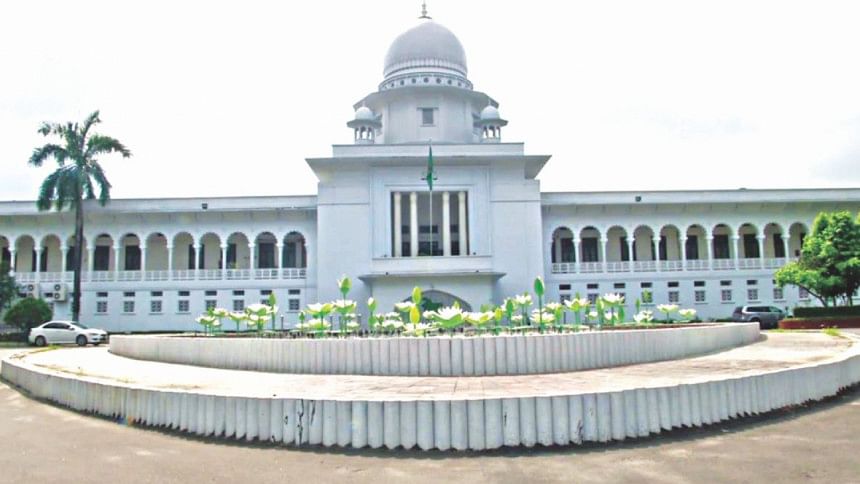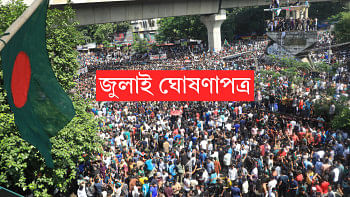Revisiting the majority opinion in the 16th amendment case

While writing the majority opinion in the Government of Bangladesh and Others v Advocate Asaduzzaman Sidddiqui and Others (2017) CLR (Spl) 1 [hereinafter 'the 16th Amendment Case'], the then Chief Justice, Surendra Kumar Sinha [hereinafter 'the CJ'] noted that the only issue he thought worth considering was whether the 16th constitutional amendment had violated any basic features of the Constitution. Since the CJ's opinion constitutes the mainstay of the court's decision and also entails a sense of general endorsement of the court's attitude, this essay will critically look into the CJ's argument from various perspectives.
The 16th Amendment Case has witnessed the first ever application of article 7B. The CJ has categorically stated in his opinion that article 7B bars amendment to the provisions that relate to the basic structures of the Constitution. He has then argued that the independence of judiciary as envisaged in article 94(4) is a basic structure of the Constitution and article 96 embodying the Supreme Judicial Council buttresses the independence of judiciary (paras. 352-354). These findings inescapably lead to the conclusion that the 16th amendment is repugnant because in violation of article 7B it has sought to amend provisions (the supreme judicial council) relating to the basic features of the Constitution (the Independence of Judiciary).
From the above discussion, it is clear that while deciding the 16th Amendment Case the CJ adopted a formalistic approach which is mostly based on the literal interpretation of article 7B of the Constitution. Since the CJ has relied on article 7B in deciding validity of the 16th Amendment, it would have been rather thoughtful on his part to examine whether article 7B is itself a valid constitutional amendment. One might argue that the constitutionality of article 7B never came into question at any stage of the proceedings, and hence, it does not call for scrutiny by the court. To counteract this argument, it should suffice to ask whether a sound judicial decision is at all possible to come by without resolving the validity issue of the norm which the court relies on to gauge validity of another norm. What if the court adjudges article 7B unconstitutional at any time in the future? In the legendary William Marbury v James Madison, 5 US (1 Cranch) 137 (1803), the then US Chief Justice John Marshall scrutinised the Judiciary Act of 1789 although the Act was not called into question by the parties to the case.
A closer look at article 7B suggests that it has affected application of at least two provisions namely, article 142 and article 7 (a basic feature) of the Constitution. Article 7B has curtailed so much power of the parliament to amend the Constitution under article 142 as would ipso facto warrant a judicial scrutiny. The relationship between article 7 and article 7B is more complex. Article 7 declares the Constitution as the supreme law to the effect that any law (including a constitutional amendment), if inconsistent with the Constitution, will be void. Thus, article 7 contemplates that the Constitution in its entirety is the supreme law and all of its provisions have a prima facie co-equal status. Instead, article 7B designates at least more than one-third provisions of the Constitution as ones constituting the basic features and makes them immutable by barring any amendments thereto. Such denomination gives rise to the impression that certain constitutional provisions rank above the others. Therefore, while article 7 envisages a horizontally configured Constitution, article 7B introduces hierarchy among constitutional norms.
In addition to the foregoing, it will also be worthwhile to revisit contextually the relationship between 'Independence of Judiciary' (as a basic feature) and the Supreme Judicial Council. The parliamentary system of government and the parliamentary mechanism for removal of supreme court judges had featured in the original Constitution of 1972. The Constituent Assembly unanimously adopted the draft text of article 96 of the Constitution Bill as it was and without any change. Clearly, the framers of the Constitution thought the parliamentary mechanism for removal of judges to be in line with both the parliamentary system of government and the independence of judiciary (both of which have later come to be regarded as basic features of the Constitution). The mechanism for removal of judges by the parliament was conceived as an effective safeguard against interference of the executive in the judiciary. After introduction of the presidential system of government by the 4th constitutional amendment, the parliamentary mechanism for removal of judges was replaced with a more president-centric mechanism. Later, while the presidential system of government was still continuing, the supreme judicial council was incorporated in which the president retained a predominant role.
In 1991, the country switched back to the parliamentary system of government, but the parliamentary mechanism for removal of judges was not reinstated. Rather, the supreme judicial council continued to exist as the mechanism for removal of judges. After restoration of the parliamentary system of government, the prime minister has become the single depository of almost all the executive power of government and the president has assumed the role of the nominal head of the government. The fact that the Constitution makes the president act exclusively on the advice of the prime minister has effectively allowed the supreme judicial council remain under the control and influence of the executive.
For example, the formal authority to set the supreme judicial council in motion to conduct inquiry against any judge, or to remove a judge from office as per the supreme judicial council's recommendation lies with the president. However, in point of fact the president will have to look to approval of the prime minister to trigger off any such inquiry to be conducted by the supreme judicial council. As regards removal of judges, it may be argued that the supreme judicial council's recommendation should serve as the finality because no judge will be removed unless recommended so by the said council, however, whether the president can remove a judge in pursuance of the supreme judicial council's recommendation alone without the prime minister's advice still remains an open question.
In this backdrop, the issue whether the supreme judicial council is in tune with the parliamentary system of government did call for serious consideration by the court. One might argue that the supreme judicial council was already designated as a basic feature in the 8th Amendment Case. However, this argument does not fare well because the 8th Amendment Case was decided during a time when the country had a presidential system of government and the issue whether the supreme judicial council was compatible with the parliamentary system of government actually never came into discussion.
The CJ's opinion also does not explain how his argument of independence of judiciary in sealing the 16th amendment's fate justifies application of the Supreme Judicial Council mechanism to remove incumbents from a number of constitutional or statutory non-judicial offices such as the Election Commissioners, the Comptroller and Auditor General, the Chairman and the Members of the Public Service Commission the Chairmen, the Members of the National Human Rights Commission, the Anti-Corruption Commission, etc.
In the end, the readers might wonder why the government did not raise all those issues discussed hereinabove while making its argument before the court during the appeal hearing of the 16th Amendment Case. It is quite understandable that the government cannot take the position that article 7B is unconstitutional, and therefore, the 16th constitutional amendment does not have to go through the basic provision test. The government also cannot flatly dismiss the supreme judicial council as unconstitutional because the selfsame government had re-enacted it by way of the 15th constitutional amendment. Having regard to the foregoing, the Attorney General seems to have been left with very limited provisions to make out a strong case for the 16th amendment. One option for the Attorney General could have been to argue that the supreme judicial council, after restoration of the parliamentary system of government, has lost its relevance as an element of independence of judiciary, and hence, an amendment thereto would no longer be controlled by article 7B. The other option could have been to press for a narrow teleological interpretation of article 7B to the effect that the purpose of article 7B was limited to preventing unconstitutional amendments at the threshold point, and then make the above-mentioned argument.
THE WRITER IS AN ADVOCATE, SUPREME COURT OF BANGLADESH.

 For all latest news, follow The Daily Star's Google News channel.
For all latest news, follow The Daily Star's Google News channel. 



Comments